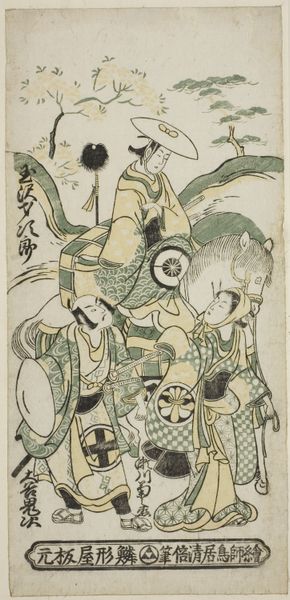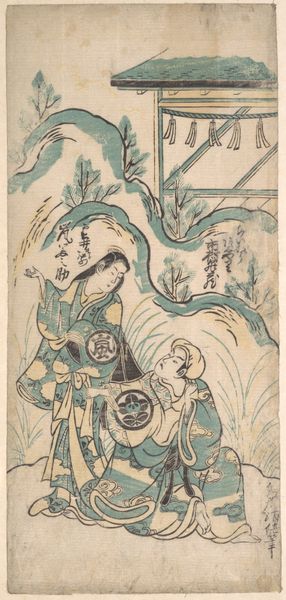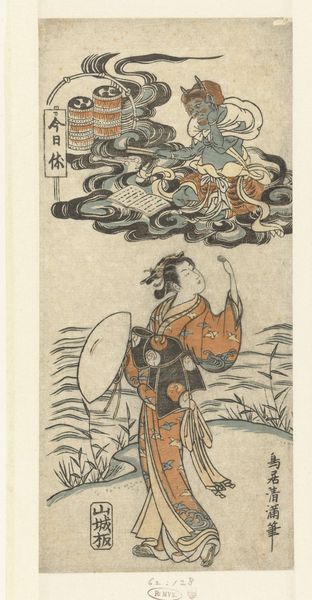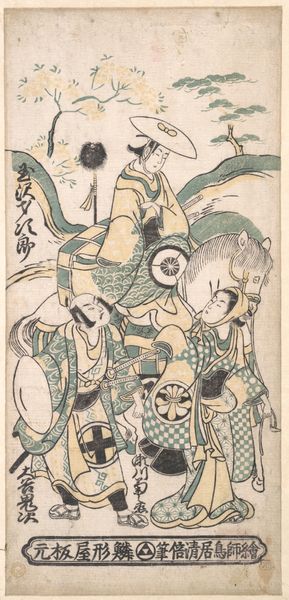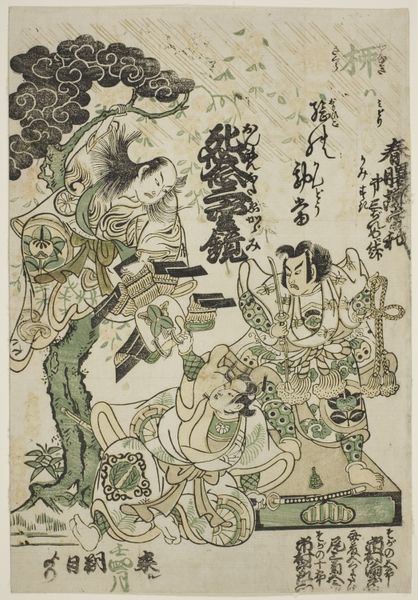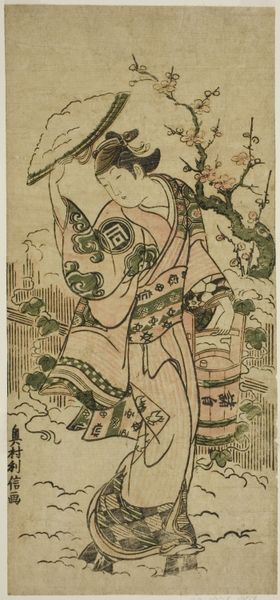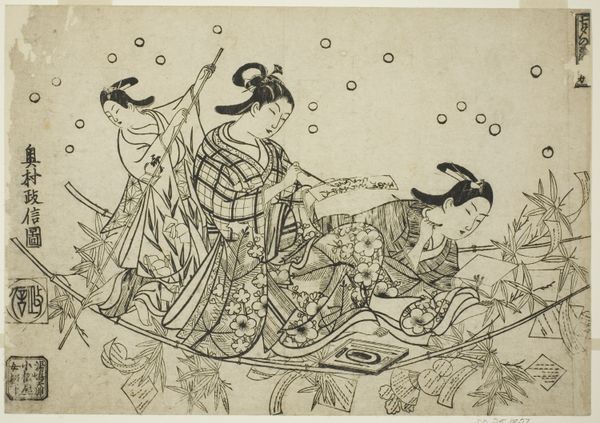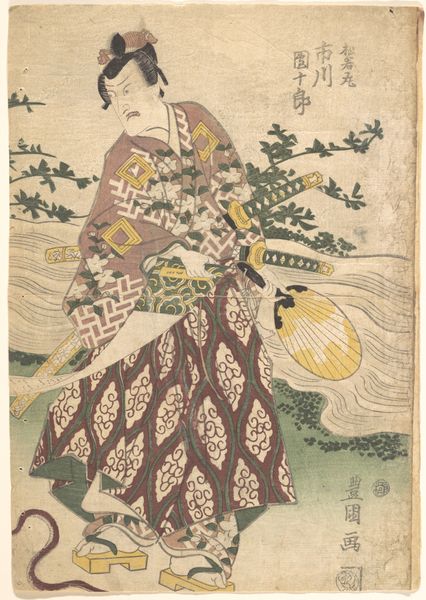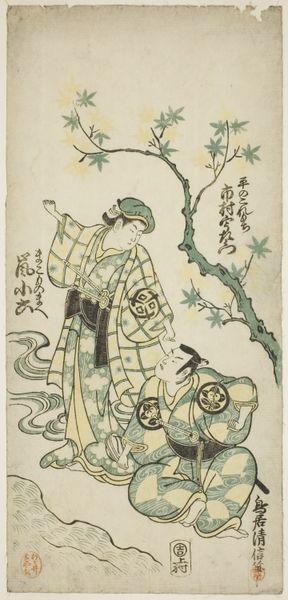
The Actors Matsumoto Koshiro II as Kumasaka Chohan, Ichimura Kamezo I as Ise no Saburo, and Sanogawa Ichimatsu I as Ushiwakamaru in the play "Hatsu Tora Kurama Genji," performed at the Ichimura Theater in the first month, 1749 1749
0:00
0:00
print, woodblock-print
#
narrative-art
# print
#
asian-art
#
ukiyo-e
#
figuration
#
woodblock-print
#
genre-painting
Dimensions: 31.4 × 15 cm (12 3/8 × 5 15/16 in.)
Copyright: Public Domain
This color woodblock print by Torii Kiyonobu II, made in Japan in 1749, depicts actors in a Kabuki play, a popular form of entertainment in the Edo period. The print offers a glimpse into the social and cultural life of Japan at the time. Kabuki theatre was a major cultural institution, drawing audiences from all social classes. Woodblock prints like this one served as publicity, and as a way for fans to commemorate their favorite actors and performances. Kiyonobu's print captures the stylized poses and elaborate costumes of Kabuki actors. The artist uses bold lines and flat planes of color, typical of the Torii school of printmaking. The print's focus on actors reflects the growing importance of the merchant class in Edo society. They had the money to spend on entertainment and were eager to embrace new forms of culture that challenged the strict social hierarchy of the time. The study of Kabuki prints like this can reveal much about the cultural values and social tensions of Edo-period Japan. We might consult playbills, theatre records, and social commentaries to deepen our understanding.
Comments
No comments
Be the first to comment and join the conversation on the ultimate creative platform.
